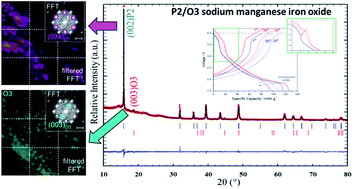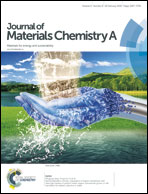Layered P2–O3 sodium-ion cathodes derived from earth abundant elements†
Abstract
Sodium layered oxide materials show excellent performance as cathodes in sodium ion batteries, leading to considerable interest in routes to improving their properties. A manganese-rich P2/O3-phase Na2/3Li0.18Mn0.8Fe0.2O2 material is synthesized, from earth abundant precursors, via a solid state-reaction. Its biphasic nature is confirmed by X-ray diffraction and transmission electron microscopy, and the inclusion of Li by solid state NMR. The pristine electrode delivers a capacity of 125 and 105 mA h g−1 at C/10 and 1C rates, respectively, with a coulombic efficiency of ca. 95 to 99.9% over 100 cycles. In addition, the influence of mechanical post-treatment is explored and shows an increased energy density and capacity retention over 50 cycles when compared to the pristine compound. The strategies outlined in this work not only apply to popular sodium manganese-based layered oxides, but also to the wider family of sodium layered oxide cathode materials in general – providing an additional facile and exploitable route to optimization.



 Please wait while we load your content...
Please wait while we load your content...